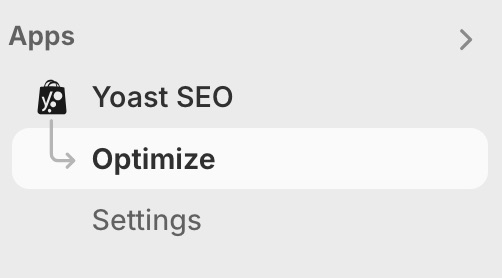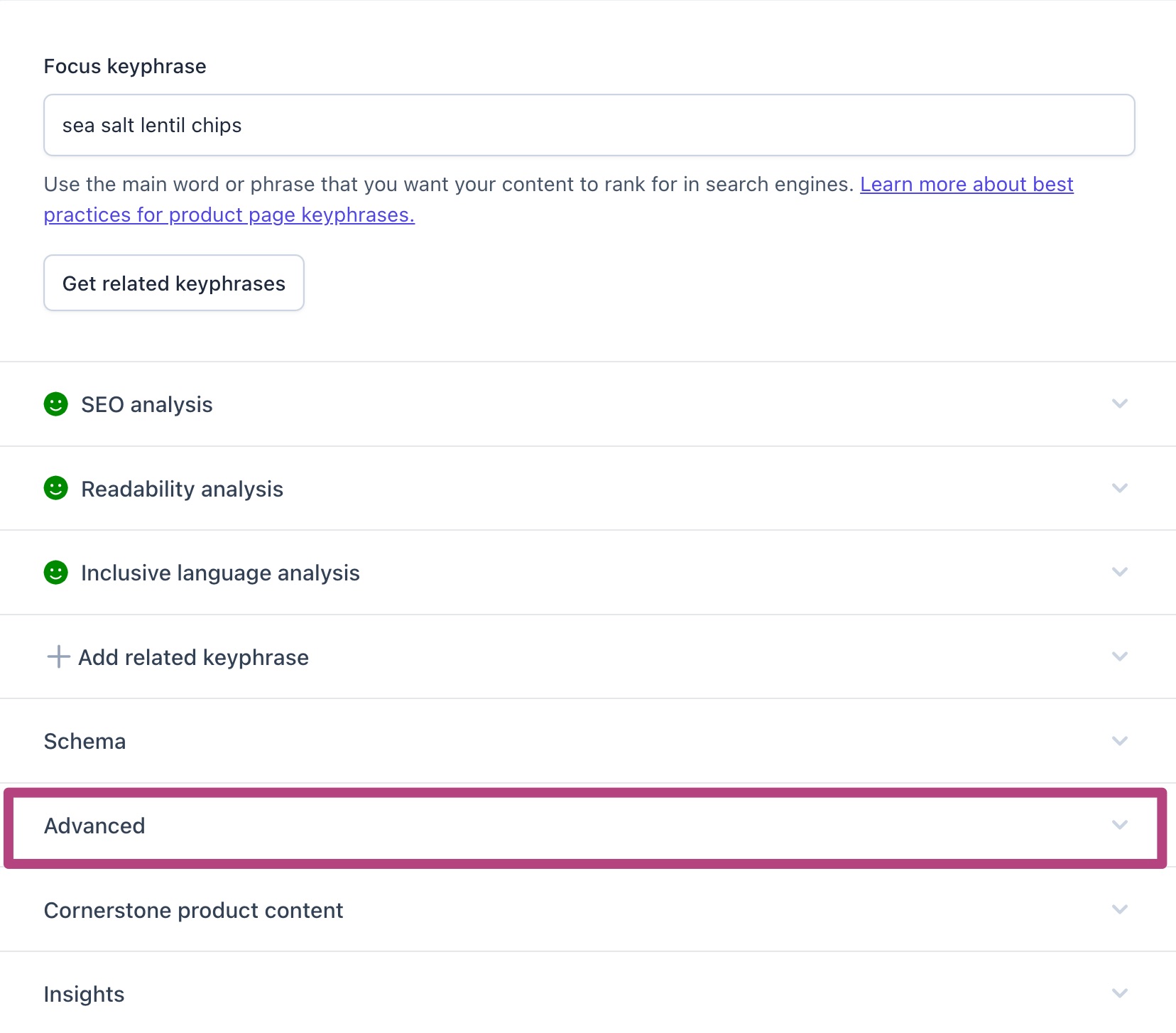The meta robots advanced settings in Yoast SEO
With the Advanced tab in Yoast SEO, you can determine how search engines crawl and index your post, page, or other content type. In this article, we’ll explain the meta robots advanced settings.
Where to find the meta robots advanced settings in WordPress
- In your WordPress Dashboard, go to your content
- In the Yoast SEO sidebar, go to Advanced

- Under Meta robots advanced, select your option
The options are No Image Index, No Archive and No Snippet.

Where to find the meta robots advanced settings in Shopify
- In your Shopify admin, go to Yoast SEO

- Go to Optimize

- Go to your content
- In the Yoast SEO sidebar, go to Advanced

- Under Meta robots advanced, tick the right box(es)
The options are No image index, No archive and No snippet.
What are the meta robots advanced settings?
By default, the field under Meta robots advanced is empty, which means that the default settings are followed. So, if your site-wide default is set to index/follow, it should be equivalent to index/follow. You can also select different options.
No image index
If you select No image index, you disallow search engines from crawling images on your page or post.
No archive
If you select No archive, you prevent search engines from showing a cached copy of the page.
No snippet
If you select No snippet, you prevent the search engines from showing a snippet of this page in the search results. It also prevents search engines from caching the page.

